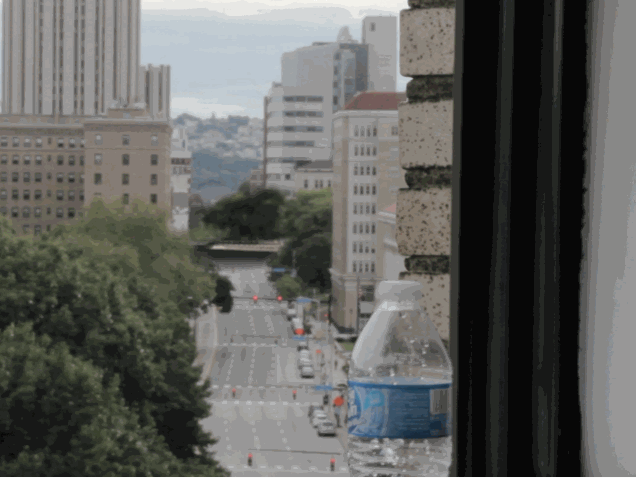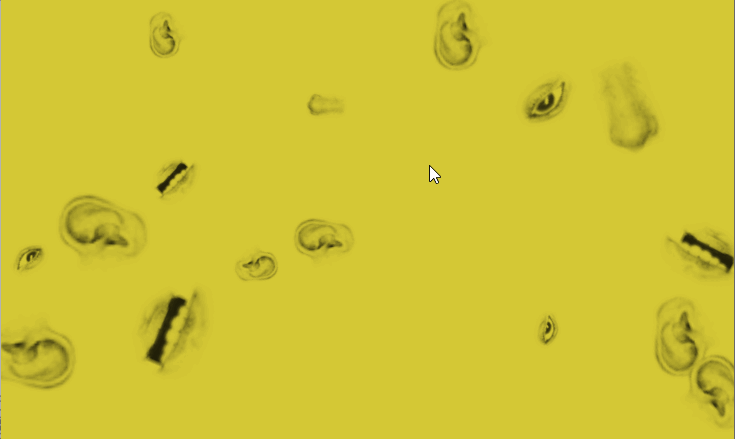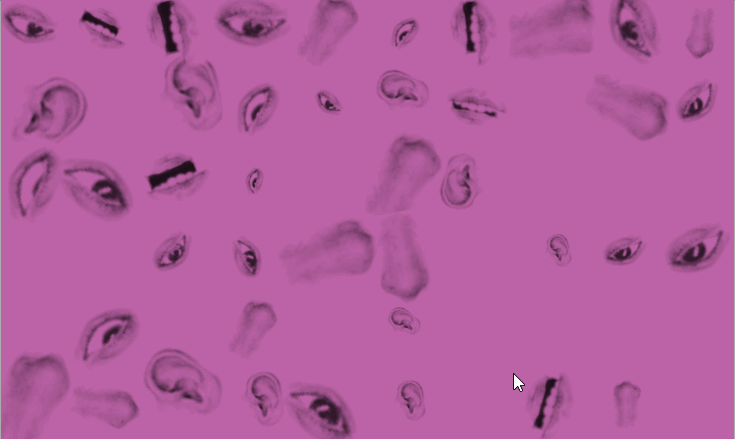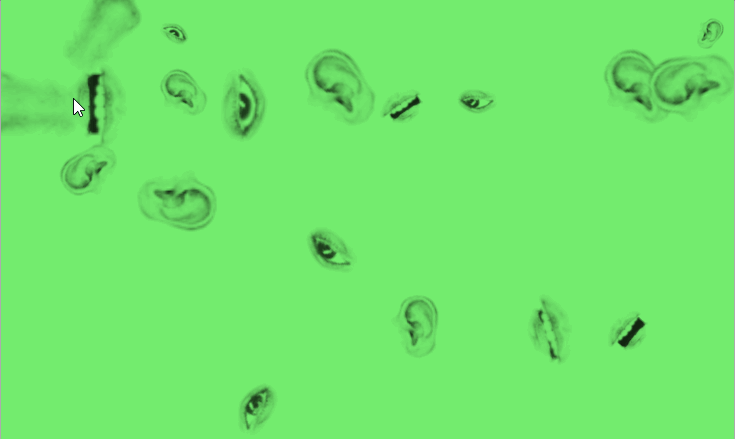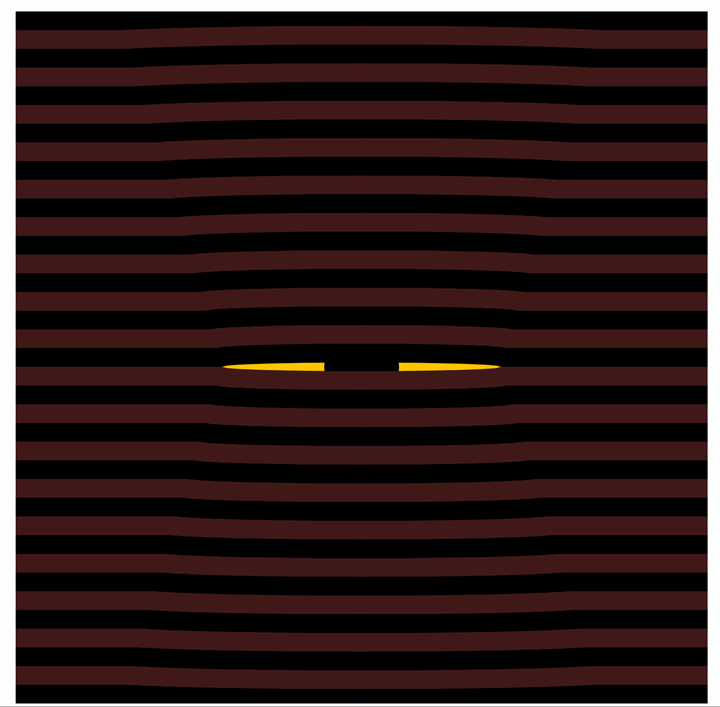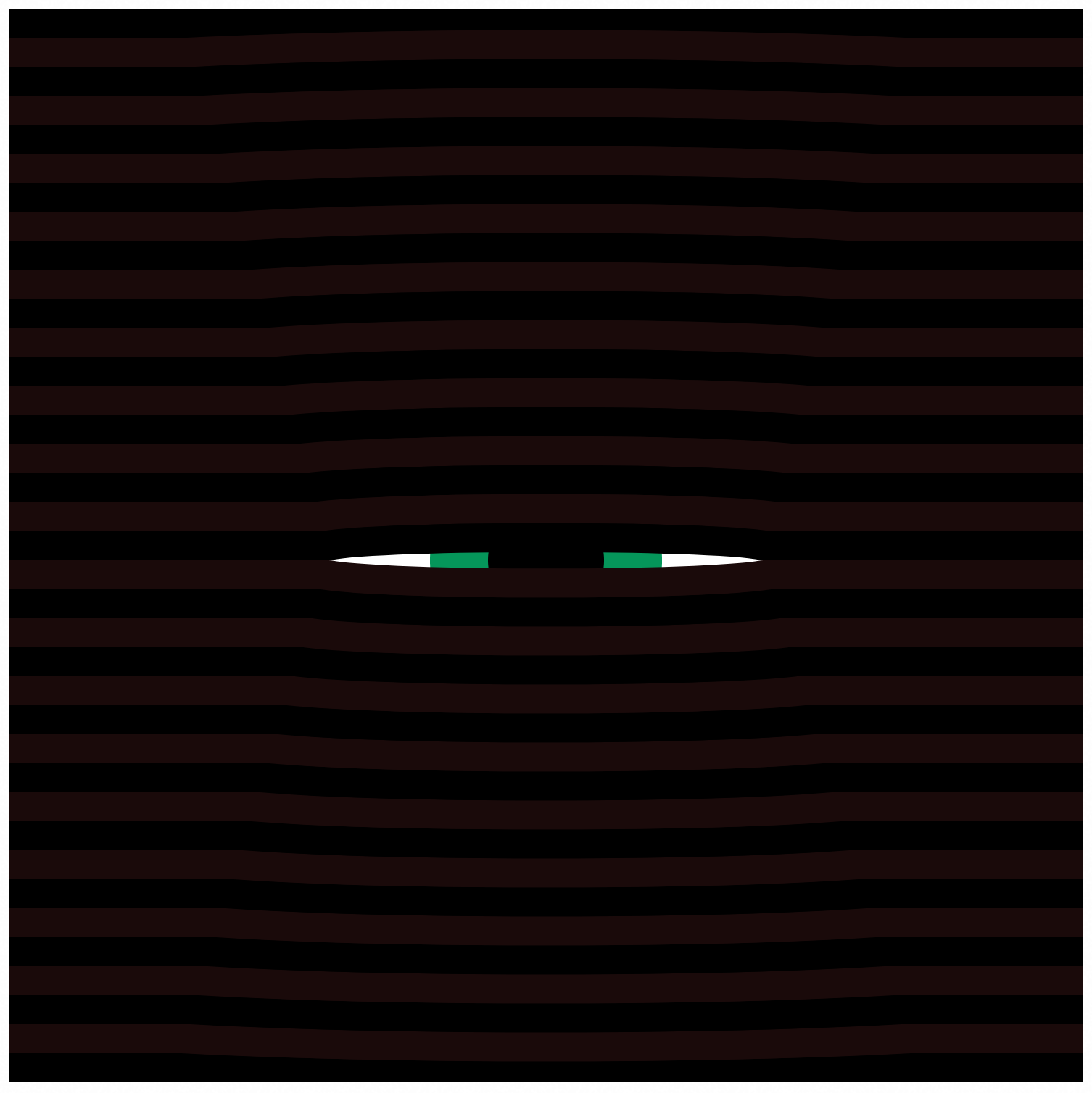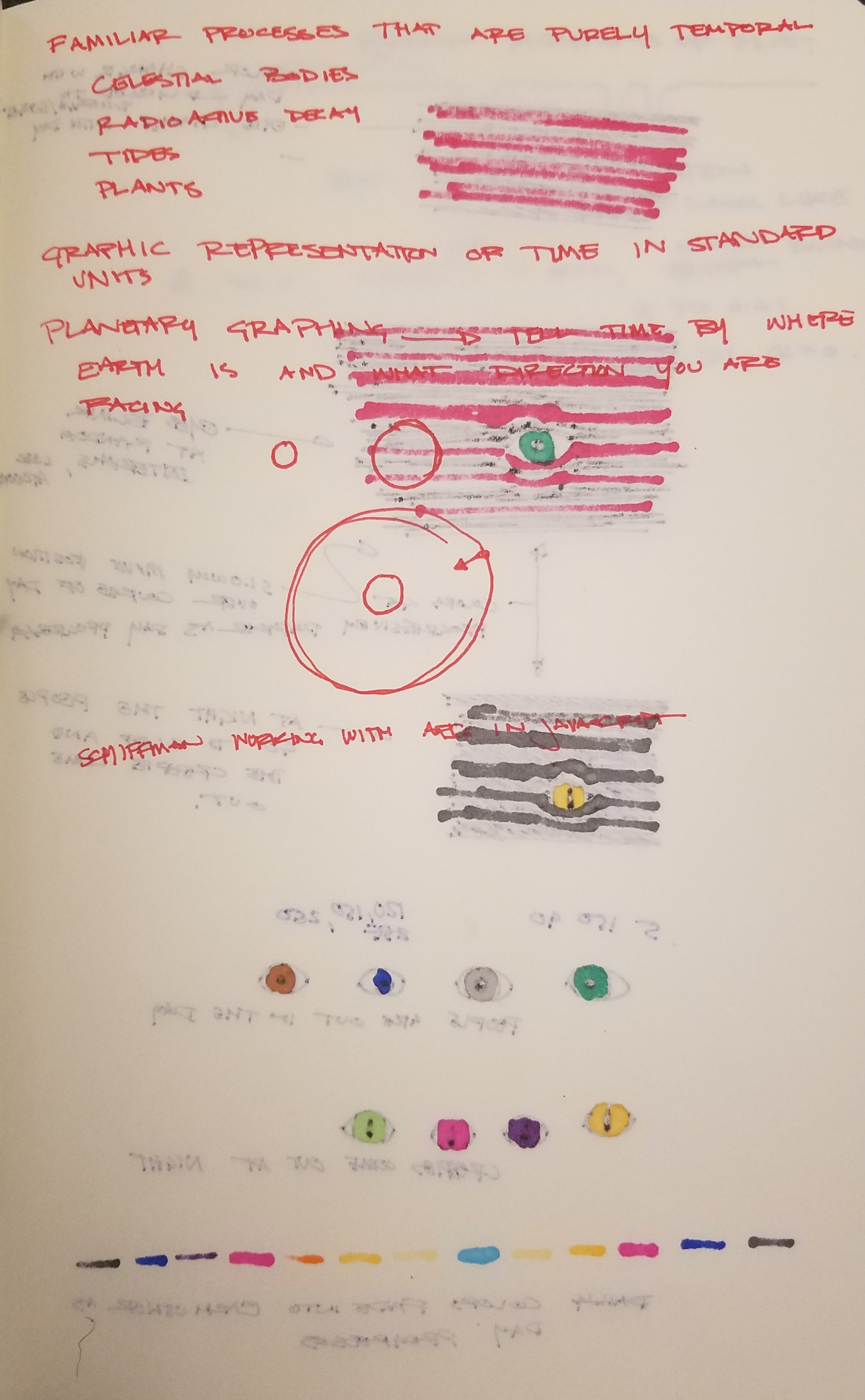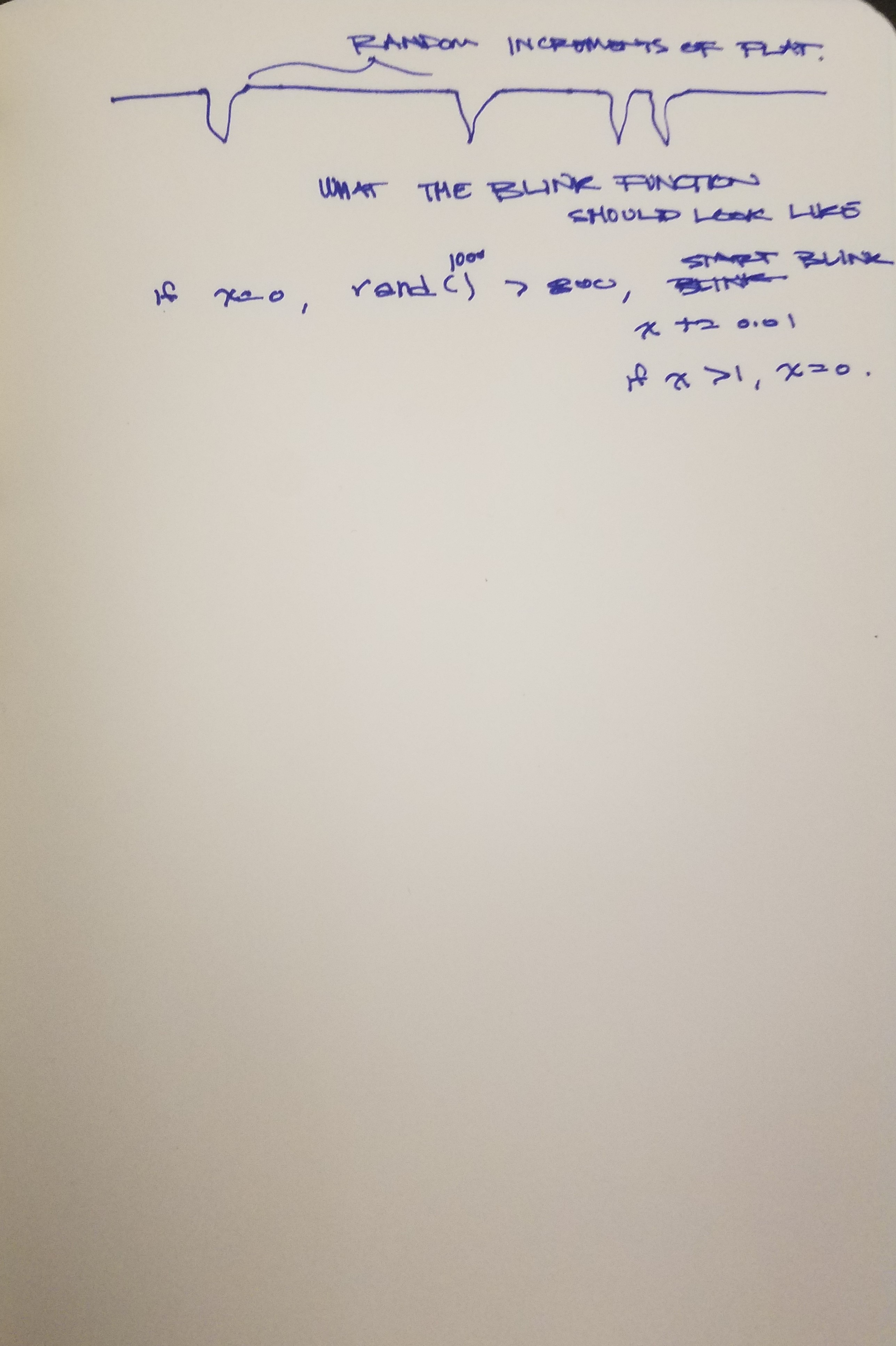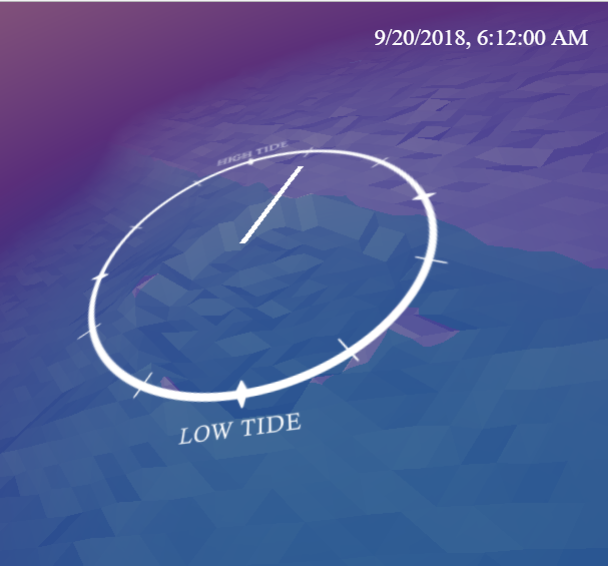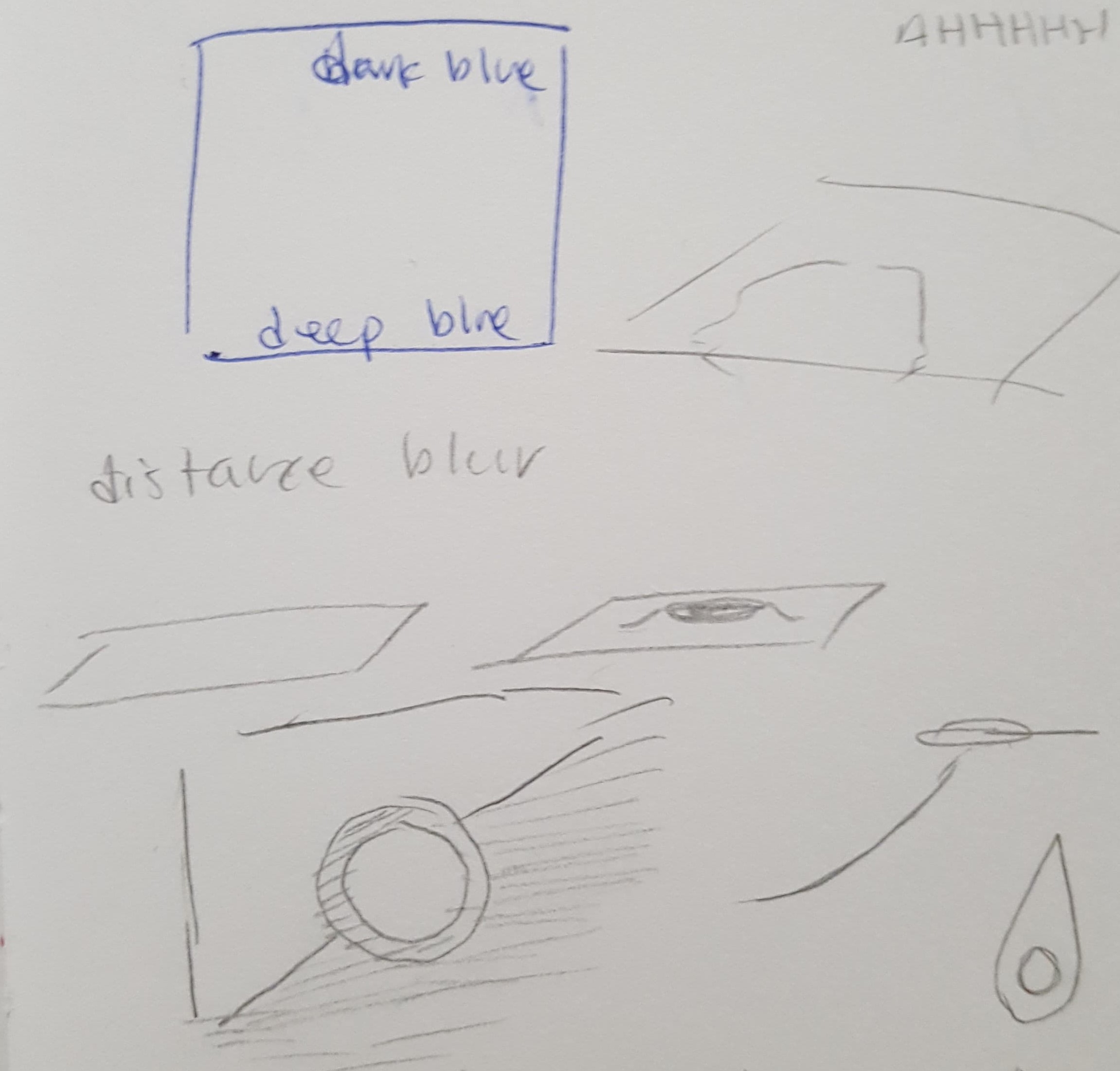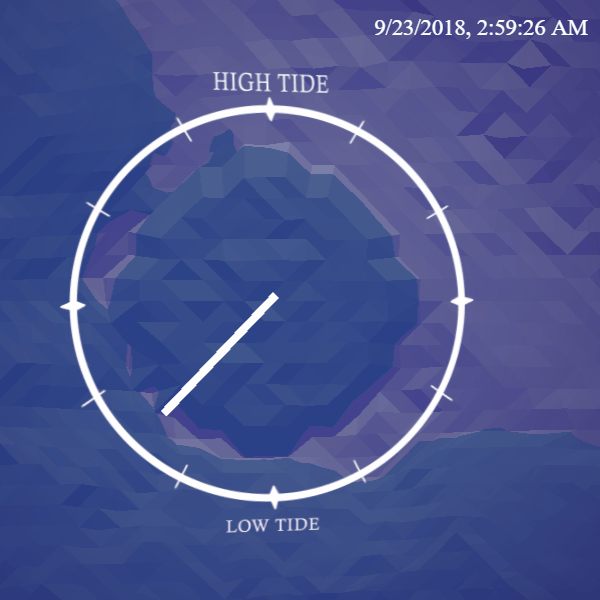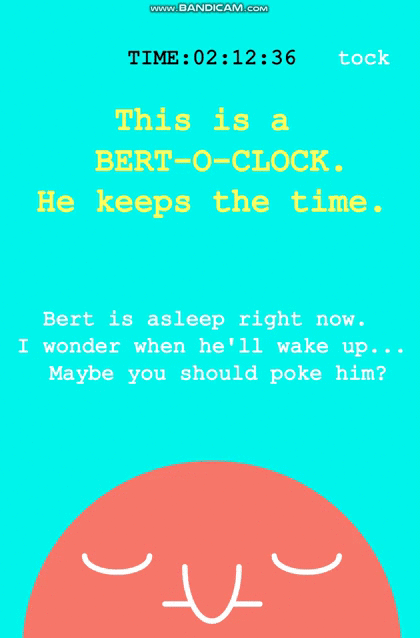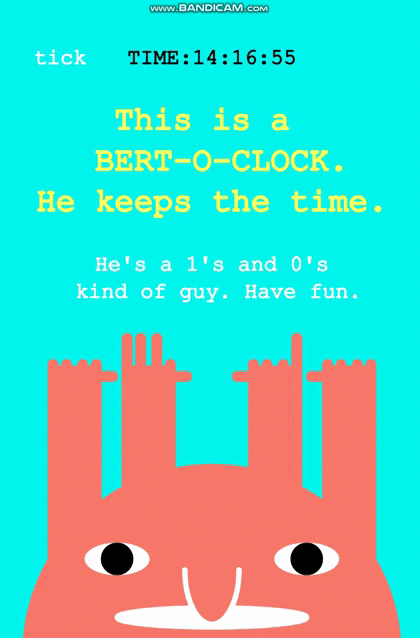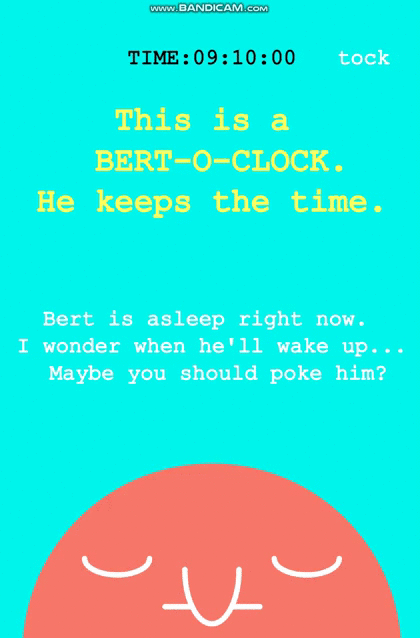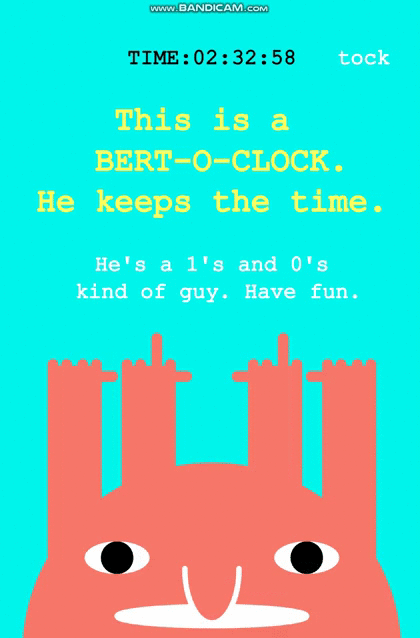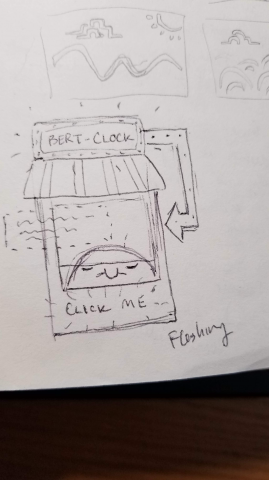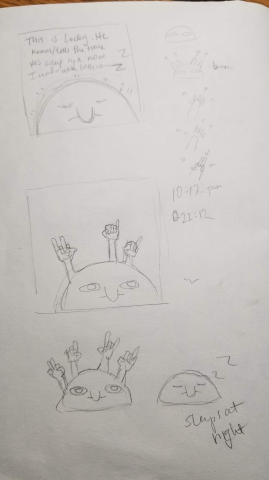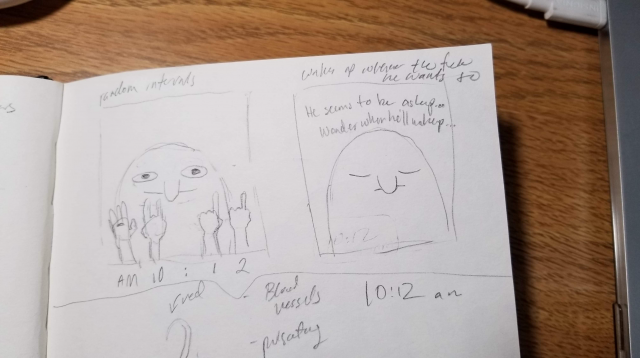var r = 175;
var cx,cy;
var e = 60;
var bop = 3;
var state; //"sleep","snark"
var nappyTime = [1,8];
var snarkTime = [8,9];
var funTime = [2,34,60];
var bodyColor = '#f7786b';
var clicked;
var snarked;
var H, M, S, mil;
function setup() {
createCanvas(400,600);
cx = width/2;
cy = height;
console.log("setup complete");
state = "sleep";
colorBody();
clicked = false;
var snarked = false;
}
function draw() {
H = hour();
M = minute();
S = second();
mil = millis();
background('#00f5eb');
//debug();
if (H==funTime[0] && M==funTime[1])
party();
updateState();
drawBert();
drawText();
if (snarked)
snark();
}
function debug(){
text((S >>> 0).toString(2),width/2, 100);
text(H + ":" + M + ":" + S ,width/2, 120);
text(bin(H,2) ,width/2, 140);
}
function drawText(){
var def= "This is a \n BERT-O1-CLOCK.\nHe keeps the time."
var sleep = "Bert is asleep right now. \nI wonder when he'll wake up...\n Maybe you should poke him?";
var wake = "He's a 1's and 0's\n kind of guy. Have fun.";
textFont("Courier New");
stroke('#fdff5c'); fill('#fdff5c');
//colorBody();
textSize(30);
textAlign(CENTER);
text(def, width/2, height/5);
stroke('#0'); fill('#0');
textSize(20);
if (state=="sleep" || (state=="snark" && !snarked)){
text(sleep, width/2, height/2);
}
else{
text(wake, width/2, height/2 - 50);
}
if(S%2==1)
text("tick", 60,60);
else
text("tock", width-60, 60);
}
function colorBody(){
fill('#f7786b');
//fill('#ff5147');
//fill(255,153,153);
}
function getTime(){
return [hour(), minute(), second()];
}
function snark(){
stroke(255); fill(255);
textSize(20);
var snark = "BERT-O1-CLOCK wakes up \n when he damn well pleases."
text(snark, width/2,height/2);
snarked = true;
}
function updateState(){
var t = getTime();
var yay = false;
if (nappyTime[0]<=t[0] && t[0]<=nappyTime[1]){
if(!clicked)
state = "sleep";
snarked = false;
}
else if (snarkTime[0]<=t[0] && t[0]<=snarkTime[1]){
state = "snark";
}
else{
state = "wake";
snarked = false;
}
console.log(state);
}
function mousePressed(){
console.log("click");
if (state=="wake")
state="sleep";
else if (state=="snark"){
if (!snarked)
snark();
else
snarked = false;
}
else
state="wake";
clicked = true;
}
function party(){
push();
background('#f000eb');
textSize(45);
textStyle(BOLD);
colorBody();
text("IT IS THE HOUR",width/2,60);
stroke(255); fill(255);
text("IT IS THE HOUR",width/2+5,60+5);
rotate(PI/4);
translate(width/2,-height/2);
pop();
}
function calcBop(){
var t = map(mil, 0, 999, 0, 1);
var yPos = map(cos(t * TWO_PI), -1, 1, 0, bop);
translate(0,yPos);
}
function drawBert(){
if (state=="wake")
drawHands();
push();
calcBop();
drawBody();
pop();
}
function drawBody(){
//draw boi
noStroke();
colorBody();
ellipse(cx, cy, 2*r, 2*r);
//draw eyes
drawEyes();
drawMouth();
//nose
stroke(255);
strokeWeight(5);
colorBody();
var nose = 100;
arc(cx,cy-r/2+10,nose/2,nose,0,PI);
}
function drawEyes(){
if (state=="wake"){
noStroke();
fill(255);
ellipse(cx-r/2, cy-r/2, e, e/2);
ellipse(cx+r/2, cy-r/2, e, e/2);
fill(0);
ellipse(cx-r/2, cy-r/2, e/2, e/2);
ellipse(cx+r/2, cy-r/2, e/2, e/2);
}
else{
stroke(255);
strokeWeight(5);
noFill();
arc(cx-r/2, cy-r/2, e, e/2, 0, PI);
arc(cx+r/2, cy-r/2, e, e/2, 0, PI);
}
}
//add to this
function drawMouth(){
//mouth
stroke(255);
strokeWeight(5);
fill(255);
if (state=="wake")
ellipse(cx,cy-r/4+10, r, r/10);
else
line(cx-r/4,cy-r/4,cx+r/4,cy-r/4);
}
function drawHands(){
rectMode(CENTER);
noStroke();
colorBody();
//left
push();
translate(cx-r/3,cy);
drawHand(1,2); //hr1
translate(-r/3-10, 0);
drawHand(1,3); //hr2
pop();
//right
push();
translate(cx+r/3,cy);
drawHand(-1, 1); //min2
translate(r/3+10,0);
drawHand(-1, 0); //min1
pop();
}
function bin(p, i){
var b = (p >>> 0).toString(2);
if (i >= b.length)
return '0';
else
return b.charAt(b.length-i-1);
}
var cap = 10;
var w = 50;
var fw = 10; //finger width
var fcap = 5;
var fl = 60;
var arml = r*3
function drawHand(side, place=5){
//place=0 - min1
//place=1 - min2
//place=2 - hr
colorBody();
//arm
rect(0, 0, w, arml, cap);
switch (place) {
case 0:
drawFinger(3, bin(M,3)==1);
drawFinger(2, bin(M,2)==1);
drawFinger(1, bin(M,1)==1);
drawFinger(0, bin(M,0)==1);
break;
case 1:
drawFinger(3, bin(M,7)==1);
drawFinger(2, bin(M,6)==1);
drawFinger(1, bin(M,5)==1);
drawFinger(0, bin(M,4)==1);
break;
case 2:
drawFinger(3, bin(H,3)==1);
drawFinger(2, bin(H,2)==1);
drawFinger(1, bin(H,1)==1);
drawFinger(0, bin(H,0)==1);
break;
case 3:
drawFinger(3, bin(H,7)==1);
drawFinger(2, bin(H,6)==1);
drawFinger(1, bin(H,5)==1);
drawFinger(0, bin(H,4)==1);
break;
case 4:
drawFinger(3, bin(S,3)==1);
drawFinger(2, bin(S,2)==1);
drawFinger(1, bin(S,1)==1);
drawFinger(0, bin(S,0)==1);
break;
default:
drawFinger(3);
drawFinger(2);
drawFinger(1);
drawFinger(0);
break;
}
//thumb
push();
translate(side*w/2,fw-arml/2);
rotate(-PI/2);
rect(0,0, fw, fl/2, fcap);
pop();
}
function drawFinger(n,up=true) {
colorBody();
noStroke();
var yPos = -arml/2;
if (!up)
yPos=yPos + 2*fl/5;
switch(n){
case 3:
rect(-w/2+fw/2, yPos, fw, fl, fcap);
break;
case 2:
rect(-w/4+fw/2, yPos, fw, fl, fcap);
break;
case 1:
rect(w/4-fw/2, yPos, fw, fl, fcap);
break;
case 0:
rect(w/2-fw/2, yPos, fw, fl, fcap);
break;
default:
fill(0);
elllipse(width/2,height/2,100,100);
}
} |




